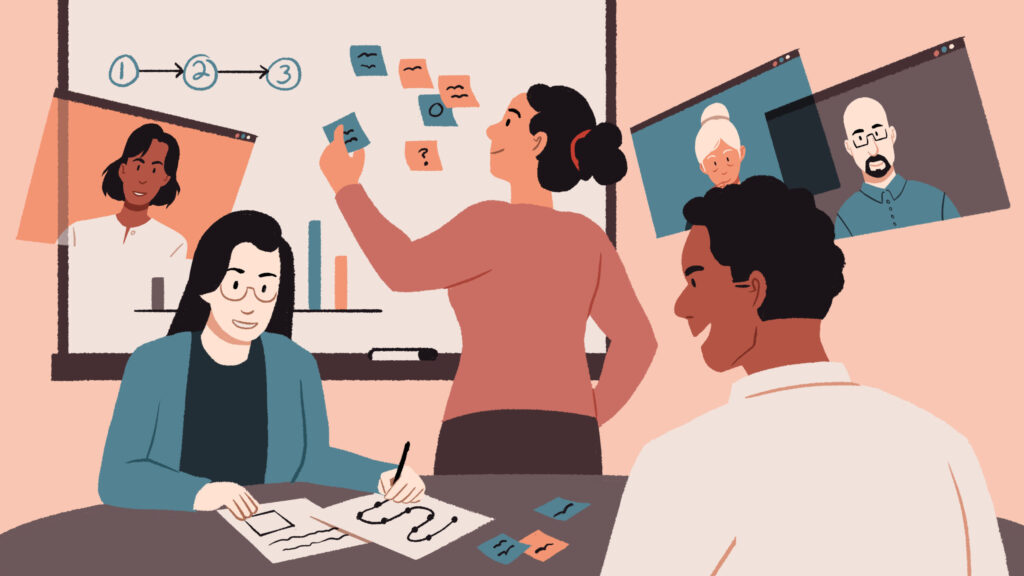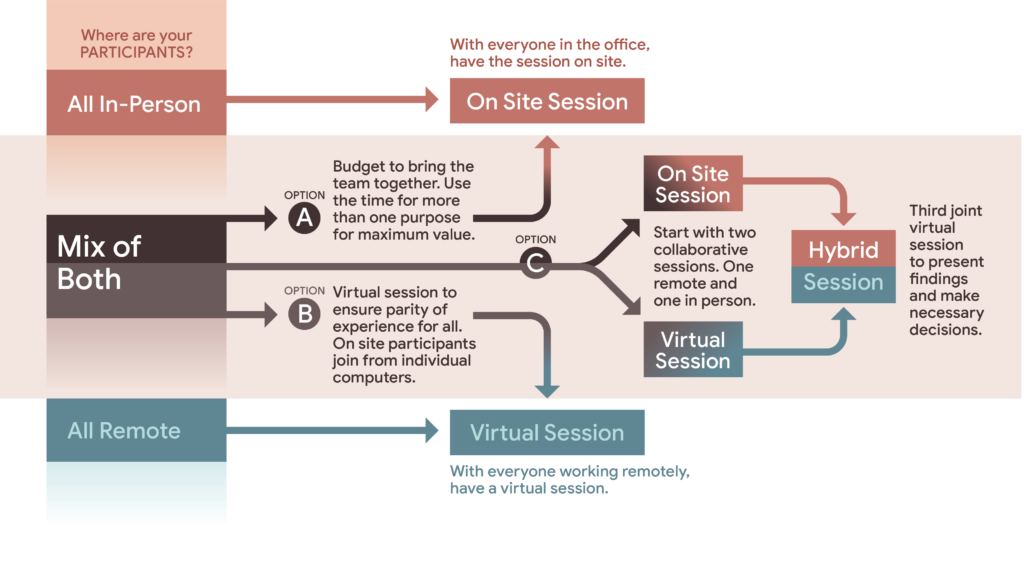The new hybrid reality: how we’re handling on-site vs remote client sessions
Visual collaboration and live sketching are at the heart of our process here at Tremendousness. For years, we’ve worked with clients both on-site (drawing on whiteboards and large sticky notes) and remotely (collaborating with tools like Zoom and Miro).
While the pandemic is far from over, vaccinations are accelerating, offices are opening back up, and clients are planning the future of their organization’s distribution. That means we’re getting more and more questions about hybrid facilitation, tooling, processes, and a whole plethora of other uncertainties. It’s not uncommon to read about those emergent ambiguities facing well-known organizations like Zillow and Salesforce, even Apple.
The top question we get is this: what do we do when workshop participants are both on-site and remote?
Of course, we’d already started thinking about the many possible permutations for hybrid workshops. In fact, our own office has shifted to a hybrid approach.
The trick is that there must be a parity of experience for all participants, whether on-site or remote. Why? Because collaboration and co-creation work best when you can create a shared experience, particularly when it involves stakeholder groups from different levels or backgrounds in organization. It’s the first step in finding common ground.
The reality is that the all-remote and the all-in person experience can both be successful, but they will not be identical. And it’s therefore a challenging scenario for participants and facilitators to manage two experiences at the same time. TL;DR: it means that it’s a sub-optimal experience for all.
First we toyed with the idea of making the call based on the participant split, but eventually we realized we could keep it super simple for all involved. Here’s a flowchart we came up with:
So far our experience has shown us that using this framework is well suited to our collaborative style of visual storytelling workshops. It might seem like an investment to run two separate sessions in the case of split participants, but it’s actually far more effective in the long run for team engagement and extraction of value. Is having two sessions for split groups the only option? No, but our hypothesis is that it makes for a better and more productive experience for all. It’s all about really thinking about the intention behind—and expected results from—any given workshop. We’ll do what makes sense.
As things open up, the world is again a new and exciting place for us, and that requires flexibility and learning. What about you? We’d love to hear what meeting and collaboration techniques you’re all thinking about employing in the coming months as all of our hybrid approaches to work get battle-tested. So let us know in the comments on our social channels!
Image: Main art by Maddy Mueller / Tremendousness. Chart by Chris Roettger & Ari Abraham / Tremendousness.

